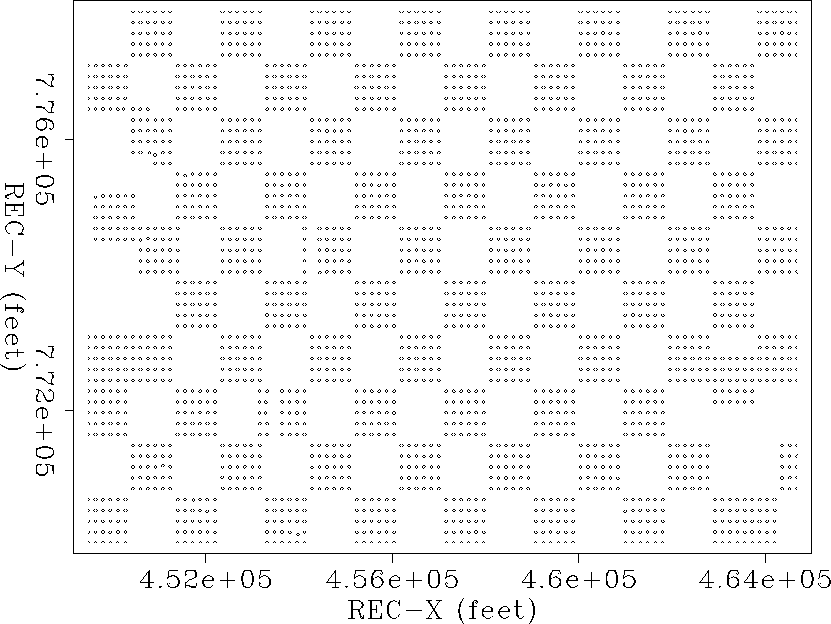




Next: SYNTHETIC EXPERIMENT
Up: FIELD DATA
Previous: FIELD DATA
The survey was designed with the aim of providing a wide
range of azimuthal coverage that would allow study of the
azimuthal variations in the velocities, the reflectivity maps and
the AVO gradient. A Button-Patch geometry was chosen and a total of ten
patches were deployed. Figure 4 shows the survey layout and the pattern
of the buttons. The survey used a total of 840 shots and 3840
receivers. Each geophone array is composed of 12 geophones over a 30 ft
circle. Figure 5 shows the actual receiver's
geometry where some
geophone groups are missing and some buttons were not covered because of
field conditions.
A full fold of 20 was achieved across the interest zone of 4.5 miles.
The nominal and maximum offsets are 12,000 and 18,000 ft.
The maximum reflection angle at the target, as determined from the far
absolute offset, is about 60 degrees.
layout
Figure 4 Button-Patch acquisition geometry (provided by Darnal, J. M; Arco Exploration and Production Technology.
 geometry
geometry
Figure 5 Layout of the receiver groups in the 3-D survey.










Next: SYNTHETIC EXPERIMENT
Up: FIELD DATA
Previous: FIELD DATA
Stanford Exploration Project
11/12/1997


